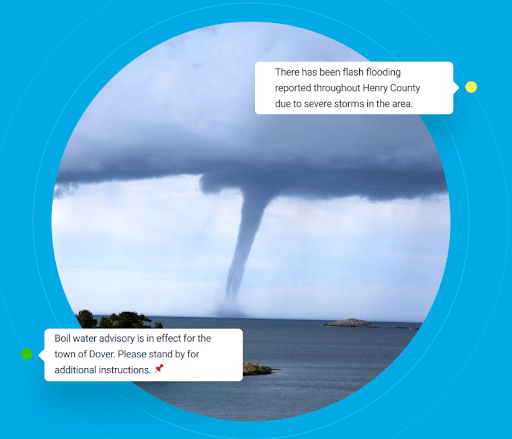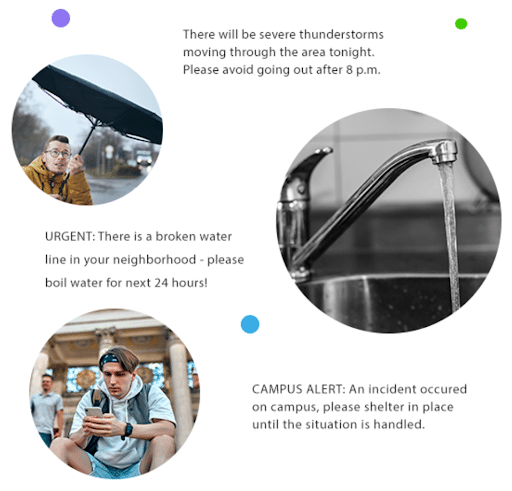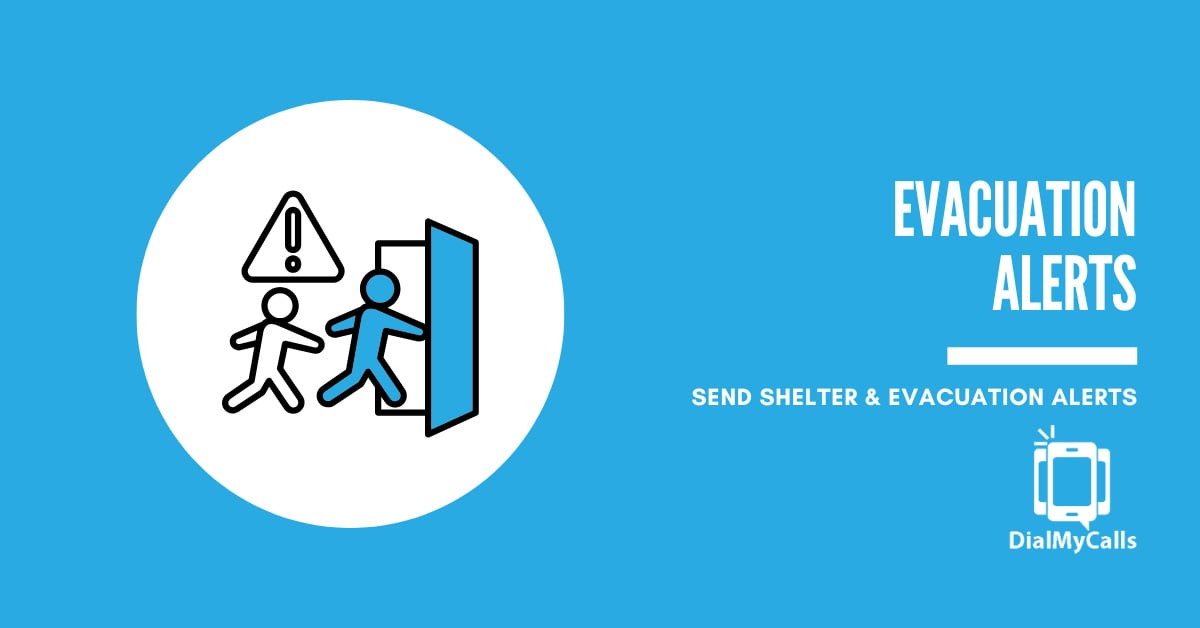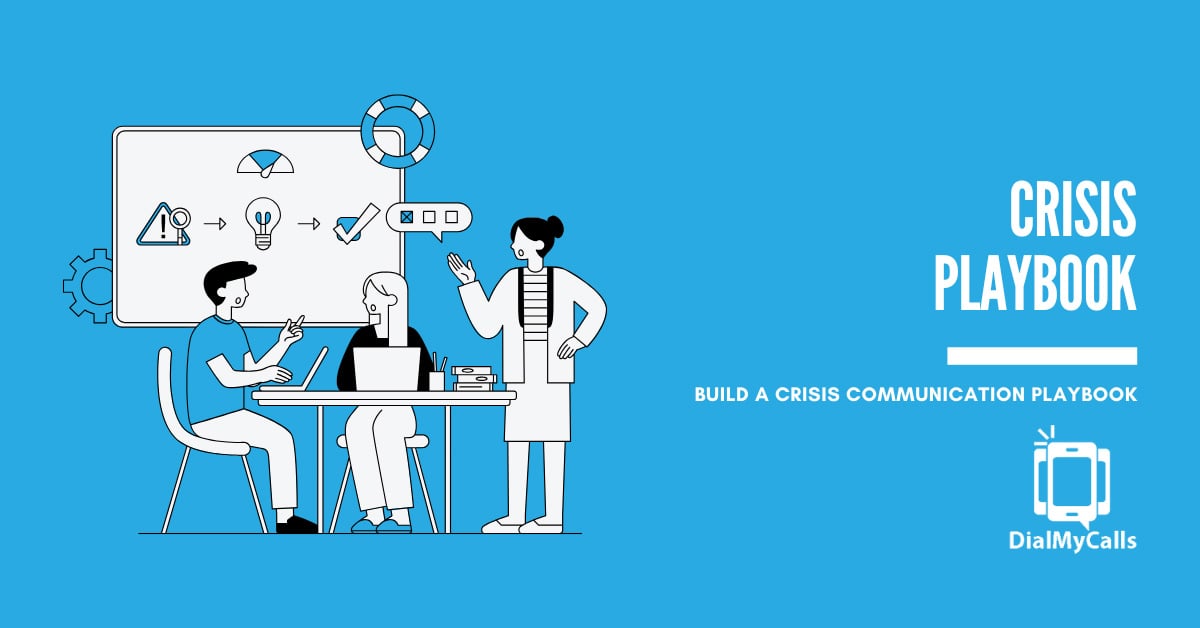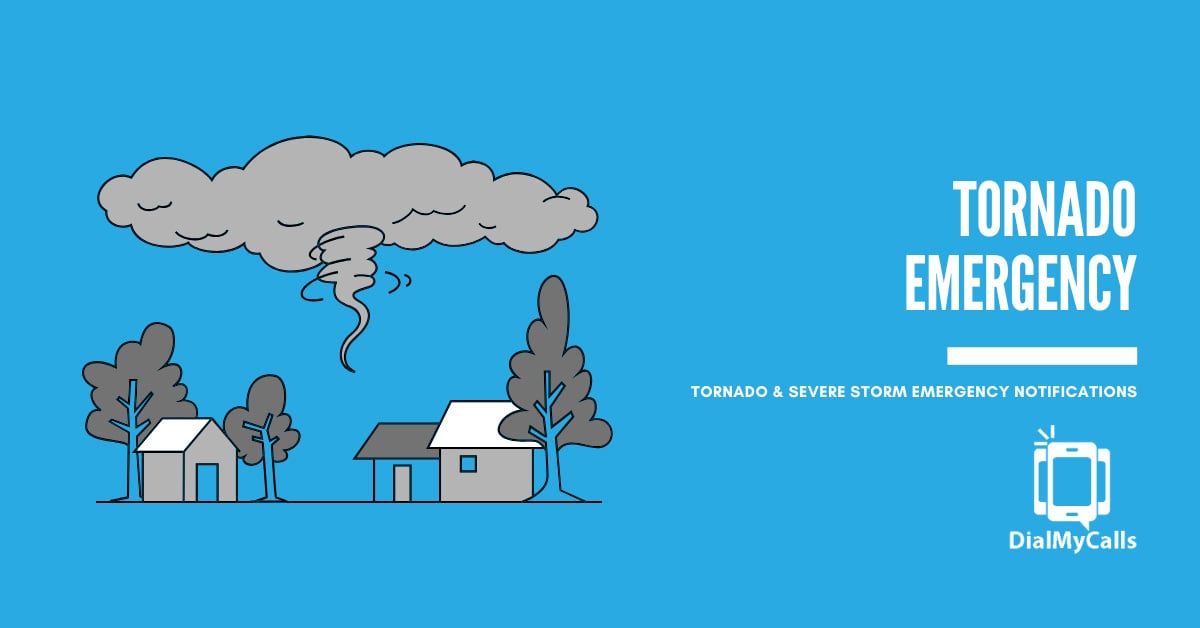What is Critical Event Management? (The 2026 Guide)
Posted by Tim Smith in Emergency Notification on March 22, 2024
Updated on January 5, 2026
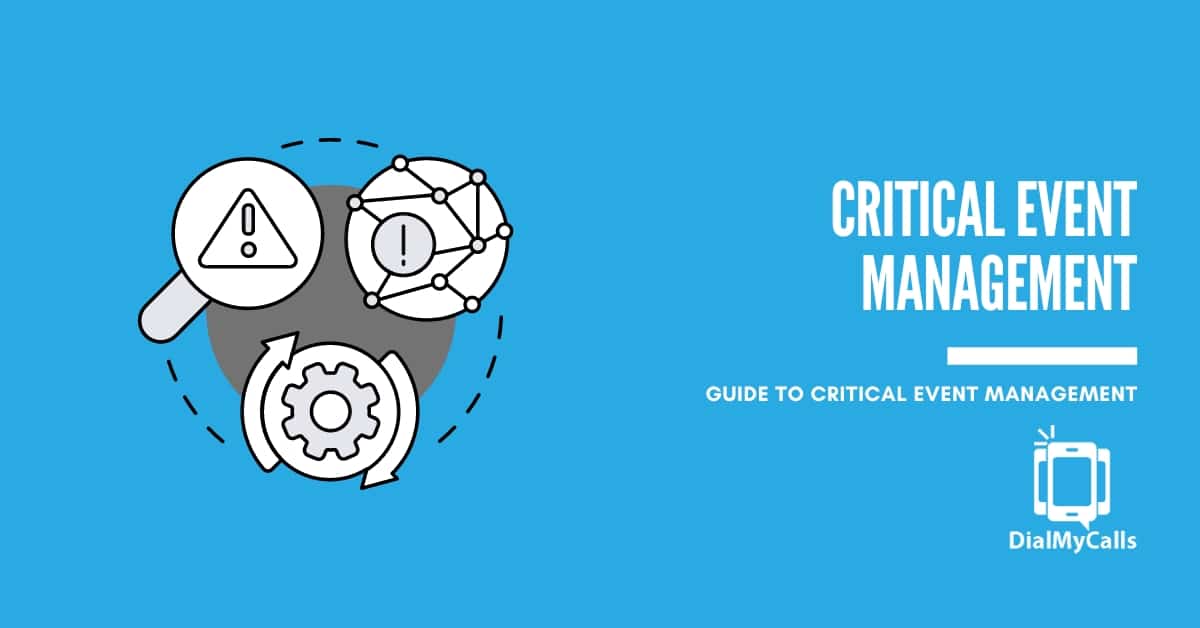
We live in a world where unforeseen disasters and emergencies can happen anytime. From natural disasters like hurricanes, earthquakes, and wildfires to human-caused incidents such as mass shootings or cyber-attacks – these critical events can have a devastating impact on businesses, communities, and individuals. That’s where Critical Event Management (CEM) comes into play.
In this article, we will dive deep into the world of CEM, understanding its definition, importance, and key tips for effective management.
What Is Critical Event Management?
Critical Event Management (CEM) is a proactive approach to identifying, monitoring, and responding to critical events that can disrupt business operations or endanger lives. It involves using technology, processes, and communication strategies to mitigate risks and ensure effective response during emergencies.
Example(s) of Critical Event Management
- During a hurricane, CEM can help businesses and communities prepare by providing real-time alerts, emergency communication channels, and evacuation plans.
- In the event of a mass shooting, CEM can aid law enforcement agencies in coordinating response efforts and communicating with the public to ensure safety.
What Is A Critical Event Management Software?
A critical event management is a specialized technology platform that helps organizations identify, track, and respond to critical events in real-time. It integrates various data sources (social media feeds, weather alerts, incident reports, etc.) to assess potential threats. This helps businesses react quickly and minimizes the impact of these events.
Types of Critical Event Management
- Natural Disasters – These include events like hurricanes, tornadoes, earthquakes, wildfires, and floods.
- Human-Caused Incidents – Such as active shooter situations or terrorist attacks.
- Technological Failures – This can include power outages, IT system crashes, or cyber-attacks.
- Health Emergencies – Includes pandemics and epidemics like COVID-19 or outbreaks of contagious diseases.
Benefits of a Critical Event Management System
- Early Detection and Alerting
- Streamlined Communication
- Rapid Response Coordination
- Real-time Monitoring and Reporting
- Business Continuity

Early Detection and Alerting
A CEM system uses advanced technology to monitor potential critical events in real-time, allowing for early detection and alerting. This can save valuable time in initiating a response, potentially preventing or minimizing the impact of an emergency.

Streamlined Communication
During a critical event, communication is key. A CEM system enables organizations to quickly disseminate information to relevant stakeholders, including employees, customers, and authorities. This helps reduce confusion and ensure everyone is on the same page.

Rapid Response Coordination
With a centralized platform for communication and collaboration, CEM allows for quick coordination between different departments and teams involved in managing a critical event. This can help speed up response times and improve overall efficiency.

Real-time Monitoring and Reporting
CEM systems provide real-time monitoring of events, allowing organizations to track the situation as it unfolds. This enables better decision-making and the ability to provide accurate updates to stakeholders.

Business Continuity
By having a well-planned CEM strategy in place, businesses can minimize disruption and ensure continuity during a critical event. This is crucial for maintaining operations, protecting assets, and ensuring the safety of employees.
image
How Does a Critical Event Management Platform Work?
A critical event management platform is a technology solution that helps organizations prepare for, respond to, and recover from critical events. It works by integrating various data sources such as social media feeds, weather alerts, and internal communication systems to provide real-time situational awareness. This allows for quick identification of potential threats and enables efficient coordination of resources during an emergency.
Is Critical Event Management Software Secure?
Yes, critical event management software is secure as it is designed to handle sensitive and confidential information related to crisis response. These platforms use advanced encryption techniques and have strict privacy policies in place to protect the data of their users.
How to Set Your Company Up for Critical Event Management
- Identify Potential Risks and Threats
- Assess the Severity of Each Risk
- Develop an Emergency Response Plan
- Invest in Technology
- Train Employees
- Establish Communication Channels
- Continuously Monitor and Update
1. Identify Potential Risks and Threats
The first step in CEM is to identify all potential risks and threats that could impact your business. This can include natural disasters, cyber-attacks, supply chain disruptions, or even pandemics.
2. Assess the Severity of Each Risk
Once you have identified the risks, assess their severity based on their likelihood and potential impact on your business operations.
3. Develop an Emergency Response Plan
Based on the identified risks, develop a comprehensive emergency response plan that outlines specific actions to be taken during a critical event. This should include protocols for communication, evacuation, and business continuity.
4. Invest in Technology
Technology plays a crucial role in CEM by providing real-time monitoring and alerting capabilities. Invest in tools like a mass texting service, crisis management software, and social media monitoring platforms to streamline your response efforts.
5. Train Employees
It’s essential to train your employees on the emergency response plan and their roles during a critical event. Conduct regular drills and simulations to ensure everyone is well-prepared.
6. Establish Communication Channels
During a critical event, timely and accurate communication is crucial. Establish multiple channels for communication, including email, text messages, phone calls, and social media.
7. Continuously Monitor and Update
CEM is an ongoing process that requires continuous monitoring and updating of the emergency response plan based on new risks or lessons learned from previous events.
5 Tips/Strategies for Critical Event Management
- Have a Comprehensive Plan
- Utilize Technology
- Train Your Team
- Establish Communication Protocols
- Continuously Monitor and Evaluate
1. Have a Comprehensive Plan
The first step in effective CEM is to have a well-defined plan that outlines roles, responsibilities, and protocols for responding to critical events. This plan should be regularly reviewed and updated as needed.
2. Utilize Technology
In today’s digital age, technology plays a crucial role in critical event management. Invest in tools like emergency notification software, real-time monitoring platforms, and communication software to enhance your response capabilities.
3. Train Your Team
It is essential to train your team on the critical event management plan and provide them with regular drills or simulations to prepare for potential emergencies. Regular training ensures that everyone is familiar with their roles and responsibilities, increasing the effectiveness of response efforts.
4. Establish Communication Protocols
Clear and effective communication is key during critical events. Establish protocols for internal and external communication, including how to disseminate information to stakeholders, media outlets, and the public.
5. Continuously Monitor and Evaluate
Critical event management is an ongoing process that requires constant monitoring and evaluation. Regularly assess your plan’s effectiveness, make necessary adjustments, and stay informed about potential risks to ensure preparedness at all times.
What is the Best Critical Event Management Tool?
When it comes to critical event management, having the right tools at your disposal can make all the difference. That’s where DialMyCalls comes in.
Wondering what is a mass warning notification system? We’re the answer. Our B2B SaaS platform offers mass notification capabilities through phone calls, text messages, and emails – making it easy to reach large groups of people quickly during an emergency. Don’t wait until disaster strikes, take action now and try DialMyCalls for your critical event management needs.
Prepare for the Unexpected with CEM & DialMyCalls
Critical event management is a crucial aspect of crisis response that should not be overlooked. By proactively identifying potential risks and having a plan in place to effectively respond to emergencies, businesses and communities can minimize the impact of critical events. Remember to stay informed, communicate effectively, and have the right tools at your disposal – like DialMyCalls – for successful critical event management.
It’s easier than ever to give CEM a shot with DialMyCalls’ free trial, so why not start preparing for the future today?
Author
Tim Smith is the Media Manager at DialMyCalls, where he has leveraged his expertise in telecommunications, SaaS, SEO optimization, technical writing, and mass communication systems since 2011. Tim is a seasoned professional with over 12 years at DialMyCalls and 15+ years of online writing experience.
Try Using DialMyCalls Right Now
Start For Free
Recent Posts
- Essential SMS Alert Checklist for Parades, Rallies & Local Events
- How to Send Effective Shelter & Evacuation Text Alerts During Emergencies
- A Step-by-Step Guide to Building a Crisis Communication Playbook
- 6 Top Emergency Notification Challenges Schools Face and How to Solve Them
- 7 Best Practices for Tornado and Severe Storm Emergency Notifications
Categories
“I am a youth minister and have spent hours in the past calling students individually to remind them of an upcoming event or to get out an urgent announcement. With DialMyCalls.com, I cut that time down to about 1 minute. I also love how I can see exactly who answered live and how long they listened so I know if they heard the whole message. DialMyCalls.com is the best website I have stumbled upon all year! Thanks!”
Central Baptist Church
Try Using DialMyCalls Right Now
Start For Free
Author
Tim Smith is the Media Manager at DialMyCalls, where he has leveraged his expertise in telecommunications, SaaS, SEO optimization, technical writing, and mass communication systems since 2011. Tim is a seasoned professional with over 12 years at DialMyCalls and 15+ years of online writing experience.
Try Using DialMyCalls Right Now
Start For Free
Recent Posts
- Essential SMS Alert Checklist for Parades, Rallies & Local Events
- How to Send Effective Shelter & Evacuation Text Alerts During Emergencies
- A Step-by-Step Guide to Building a Crisis Communication Playbook
- 6 Top Emergency Notification Challenges Schools Face and How to Solve Them
- 7 Best Practices for Tornado and Severe Storm Emergency Notifications
Categories
“I am a youth minister and have spent hours in the past calling students individually to remind them of an upcoming event or to get out an urgent announcement. With DialMyCalls.com, I cut that time down to about 1 minute. I also love how I can see exactly who answered live and how long they listened so I know if they heard the whole message. DialMyCalls.com is the best website I have stumbled upon all year! Thanks!”
Central Baptist Church
Try Using DialMyCalls Right Now
Start For Free
